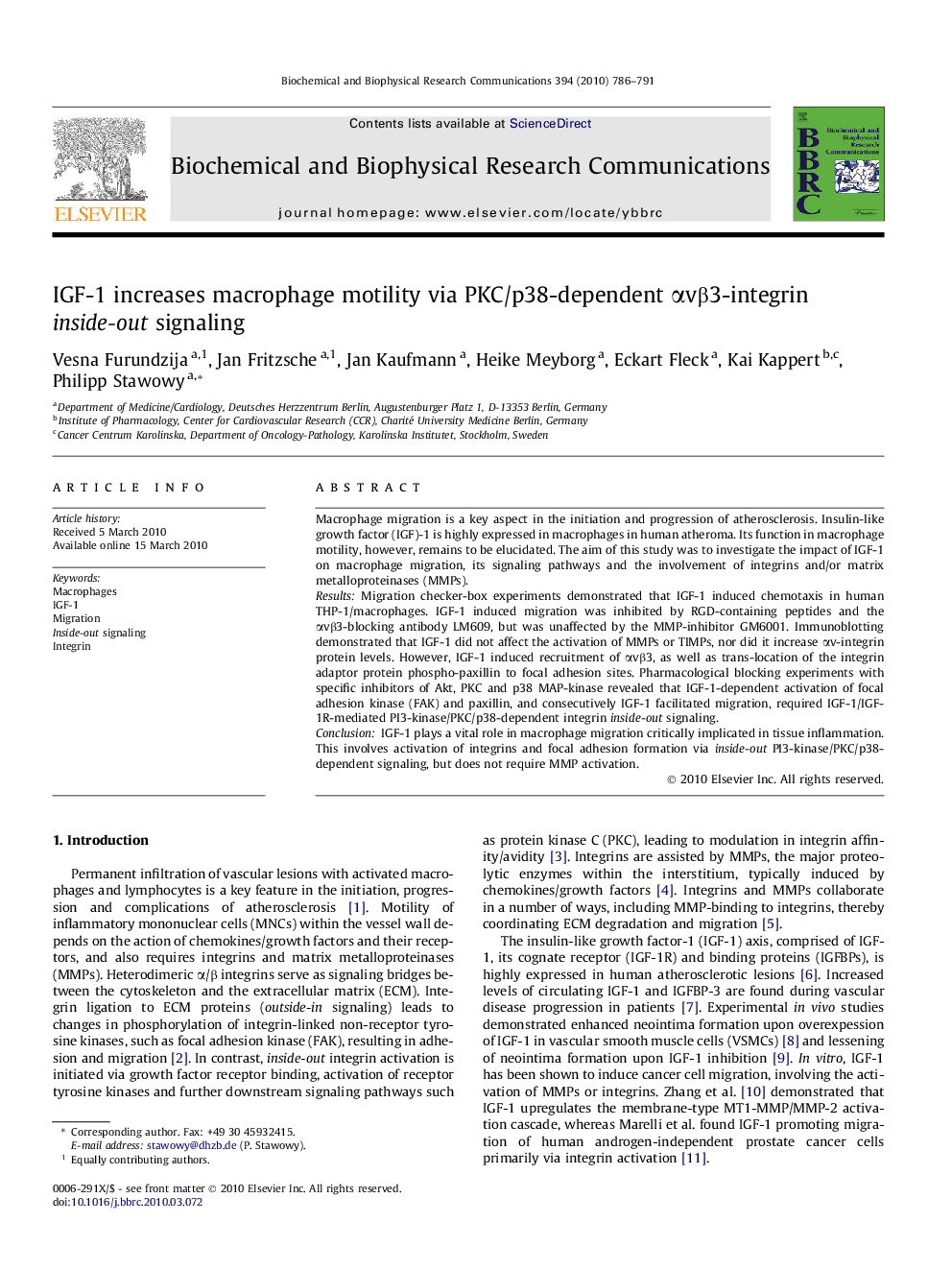| Article ID | Journal | Published Year | Pages | File Type |
|---|---|---|---|---|
| 1931986 | Biochemical and Biophysical Research Communications | 2010 | 6 Pages |
Macrophage migration is a key aspect in the initiation and progression of atherosclerosis. Insulin-like growth factor (IGF)-1 is highly expressed in macrophages in human atheroma. Its function in macrophage motility, however, remains to be elucidated. The aim of this study was to investigate the impact of IGF-1 on macrophage migration, its signaling pathways and the involvement of integrins and/or matrix metalloproteinases (MMPs).ResultsMigration checker-box experiments demonstrated that IGF-1 induced chemotaxis in human THP-1/macrophages. IGF-1 induced migration was inhibited by RGD-containing peptides and the αvβ3-blocking antibody LM609, but was unaffected by the MMP-inhibitor GM6001. Immunoblotting demonstrated that IGF-1 did not affect the activation of MMPs or TIMPs, nor did it increase αv-integrin protein levels. However, IGF-1 induced recruitment of αvβ3, as well as trans-location of the integrin adaptor protein phospho-paxillin to focal adhesion sites. Pharmacological blocking experiments with specific inhibitors of Akt, PKC and p38 MAP-kinase revealed that IGF-1-dependent activation of focal adhesion kinase (FAK) and paxillin, and consecutively IGF-1 facilitated migration, required IGF-1/IGF-1R-mediated PI3-kinase/PKC/p38-dependent integrin inside-out signaling.ConclusionIGF-1 plays a vital role in macrophage migration critically implicated in tissue inflammation. This involves activation of integrins and focal adhesion formation via inside-out PI3-kinase/PKC/p38-dependent signaling, but does not require MMP activation.
